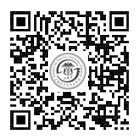
To implement the guiding principles of the Third Plenary Session of the 20th CPC Central Committee and the National Educational Work Conference, and to advance the comprehensive reform of higher education in service of the“Healthy China” Initiative and future global health, the Review Committee and Chief Editorial Meeting for the Chinese Medical Education Case Library and Digital Case-Based Textbooks convened in Beijing on March 14, 2025. The event brought together experts from the Review Committee, along with chief reviewers, chief editors, and associate editors. Lin Huiqing, Chairman of the Expert Committee on Medical Education of the Ministry of Education, former Party Leadership Group Member and former Vice Minister of the Ministry of Education, delivered a keynote speech. Academician Fan Xianqun of the Chinese Academy of Engineering, Vice President of Shanghai Jiao Tong University (SJTU), Chancellor of its School of Medicine and Advisor to the Editorial Committee, was invited to attend, alongside Mou Shan,Vice Chancellor of the School of Medicine and Vice Chair of the Editorial Committee.
In line with thenational strategy for digital education outlined at the National Education Work Conference and amid therapid advancement ofeducational digital transformation, People’s Medical Publishing House and People’s Medical Electronic Audio-Visual Publishing House, together with the Ministry of Education’s National Center for Health Professions Development and leading experts from top medical schools, are spearheading the construction of the Chinese Medical Education Digital Resource Sharing Platform and Case Library. Shanghai Jiao Tong University School of Medicine is actively exploring the integration of digital intelligence and AI-driven innovations in medical education.

During a highlight panel discussion moderated by Professor Chi Baorong of Jilin University, Academician Fan Xianqun, together with Academicians Zhang Yingze, Wang Jian’an, and Huang Xiaojun, discussed digital case-based teaching and innovative talent development.

Fan introduced the School’s distinctive“4+4” Clinical Medicine program and, for the first time, unveiled the new“4+4+X” MD-PhD dual doctorate model in medical-engineering integration. Since 2002, the School (formerly Shanghai Second Medical University) has been a national pioneer in implementing the“4+4” program, recruiting around 25 top graduates annually from elite non-medical disciplines to pursue a four-year Doctor of Clinical Medicine degree.Fan noted that the traditional four-year structure leaves limited time for students to complete both clinical training and high-quality research. To address this challenge and align with national strategic goals in health and technology, the School, in collaboration with Global Institute for Future Technology (GIFT) atSJTU—a pilot institution under the Ministry of Education—launched the“4+4+X” MD-PhD integrated program. This initiative aims to cultivate future leaders in medical-engineering integration, drive breakthroughs in frontier and disruptive technologies, enhance China’s strategic innovation capacity, and support the development of new quality productive forces.
The“4+4+X” MD-PhD integrated program features a dual-degree pathway consisting of four years of undergraduate education followed by four or more years of doctoral training. In collaboration with GIFT and other top-tier science and engineering platforms, the School leverages SJTU’s strengths in both medicine and engineering to cultivate interdisciplinary talents in medical-engineering innovation. This program embodies the integrated development of education, science and technology, and talent through a deeply interdisciplinary curriculum that merges coursework, clinical training, and scientific research. Upon fulfilling the MD-PhD degree requirements, students will earn dual doctorates. Supported by cutting-edge digital technologies such as AI, the program builds on the School’s pioneering vertically integrated organ system curriculum and incorporates digital case-based learning to streamline clinical knowledge acquisition and enhance clinical and research training. Outstanding students may simultaneously begin PhD training, benefiting from a dual-mentorship model in medical and engineering fields, focused AI research opportunities, enhanced international training, and dedicated funding. This comprehensive approach has been highly praised by participating experts for advancing the cultivation of innovative medical talents. In 2024, the School established a specialized task force for“AI + Medical Education” and introduced the AI + Medical Education Action Plan, which focuses on five key areas: developing AI majors and micro-majors, creating AI-based teaching resources, building smart teaching platforms, exploring AI-driven educational assessment models, and enhancing AI competencies among faculty.


During the meeting, the official list of chief reviewers, chief editors, and associate editors for the Chinese Medical Education Case Library and Digital Case-Based Textbooks was announced. Fourteen faculty members from Shanghai Jiao Tong University School of Medicine were selected. Academician Ning Guang and Professor Wang Weiqing were appointed chief reviewers forInternal Medicine–Endocrinology. Academician Fan Xianqun (Ophthalmology), Professor Wu Hao (Otorhinolaryngology), Professor Bi Yufang (Internal Medicine–Endocrinology), and Professor Di Wen (Obstetrics and Gynecology) were named chief editors. Associate editor appointments included Professor Ma Xiong (Internal Medicine–Gastroenterology), Professor Lv Liangjing (Internal Medicine–Rheumatology and Immunology), Professor Li Qingfeng (Surgery–Plastic Surgery), Professor Pan Weihua (Surgery–Pediatric Surgery), Professor Xu Yuanjin (Stomatology), Professor Jia Renbing (Ophthalmology), Professor Wang Zhen (Psychiatry), and Professor Xie Qing (Rehabilitation Medicine).
Looking ahead, AI and other digital-intelligent technologies will be essential in training innovative medical talent. The School will continue to enhance medical education by focusing on core areas such as digital curricula, new teaching materials, faculty training, and clinical practice platforms, driving the modernization of medical education.

